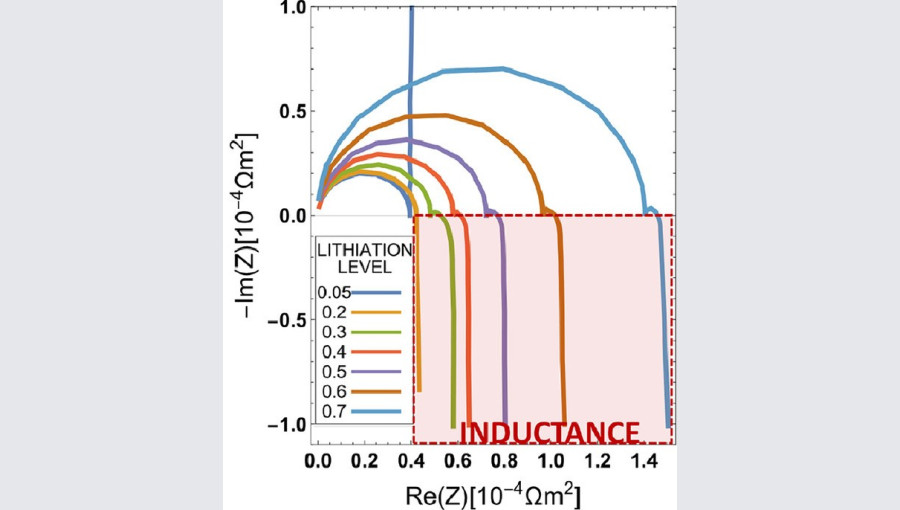Inductive response of phase separating battery materials

UL FS
Date of publication:
Understanding the processes in batteries is crucial for their proper design, control, management and analysis of the state of charge, health and safety. Physical sensors are a very important support for the advanced development and operation of batteries, and their combination with virtual models enables the exploitation of multiplicative effects, as mechanistically based models reveal a deeper insight into the phenomenology of the processes and enable their in-depth understanding.
Researchers from the Faculty of Mechanical Engineering, Laboratory for Internal Combustion Engines and Electromobility (LICeM) have, in collaboration with the Denmark Technical University (DTU), for the first time calculated the full electrochemical impedance spectrum of the LiFePO4 nanoparticle, which is one of the most commonly used materials in lithium-ion batteries. Striking result, which shows the strongly inductive behaviour of a phase separating nanoparticle in the low-frequency part of the spectrum (figure), is published in the prestigious journal Energy Storage Materials (IF: 20,831).
Electrochemical impedance spectroscopy (EIS) is a very effective non-invasive method for analyzing the electrical response of various chemical systems to periodic perturbations. Adequate interpretation of impedance spectra measured by the EIS method inherently relies on an accurate mathematical model of the analysed system. Researchers have developed the mathematical model for the analysis of the impedance spectra based on the phase field theory. The physicochemically consistent model has enabled unprecedented virtual insight into the phenomenology of processes characteristic for the so-called chemical inductor, a recently discovered phenomenon. Until now, the processes in the active materials of the battery particles have been mainly associated with resistive and capacitive effects where the current leads the voltage in phase. The result of a mechanistically based material model considering the phase separation, which for sufficiently slow charging predicts separation into the LiFePO4 and FePO4 phase, clearly indicates inductive effects where the leads the current in a wide range of lithiation levels of the material.
Breakthrough insight presented in the article explains that inductive effects are the result of fast and generally heterogeneous (de)intercalation of lithium into the active material, which creates chemical potential gradients, and slow phase boundary stabilization diffusion processes. The researchers also interlinked the results with experimental observations published in the literature that had not been elucidated until now, thus further substantiating the significance of their discovery.
Published results have a significant impact on the understanding of the electrochemical processes of phase separating materials and also on the interpretation of spectra of phase separating materials measured by the method of impedance spectroscopy. Both impacts additionally contribute to a more efficient model-based prediction of states in batteries made from phase separating materials which is crucial for more appropriate control and management of such batteries.
Article details:
ZELIČ, Klemen, MELE, Igor, BHOWMIK, Arghya, KATRAŠNIK, Tomaž. Phase separating electrode materials - chemical inductors?. Energy storage materials. Feb. 2023, vol. 56, page. 489-494, ilustr. ISSN 2405-8297. https://www.sciencedirect.com/science/article/pii/S2405829723000090,
DOI: 10.1016/j.ensm.2023.01.008 (JCR IF= 20.4)


